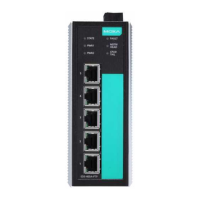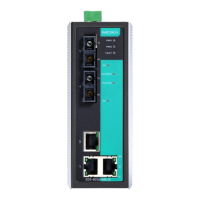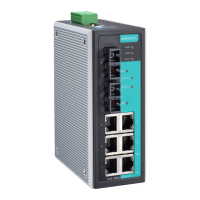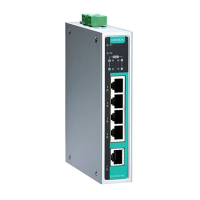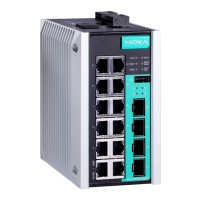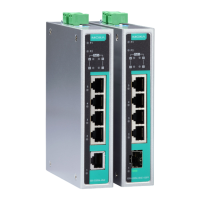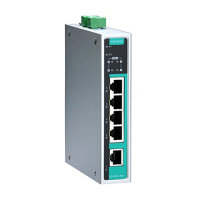PT-7728 User’s Manual Featured Functions
3-73
LLDP Table
Setting Description
Port Port number of the port connecting to the neighboring device.
Neighbor ID Entity that identifies a neighboring device uniquely (usually the
MAC address)
Neighbor Port The port number of connected neighboring device.
Neighbor Port Description A textual description of the neighboring device’s interface.
Neighbor System Hostname of the neighboring device.
Using Monitor
You can monitor statistics in real time from PT-7728’s web console and serial console.
Monitor by Switch
Access the Monitor by selecting System from the left selection bar. Monitor by System allows the
user to view a graph that shows the combined data transmission activity of all of PT-7728’s 18
ports. Click one of the four options—Total Packets, TX Packets, RX Packets, or Error
Packets—to view transmission activity of specific types of packets. Recall that TX Packets are
packets sent out from PT-7728, RX Packets are packets received from connected devices, and
Error Packets are packets that did not pass TCP/IP’s error checking algorithm. The Total Packets
option displays a graph that combines TX, RX, and TX Error, RX Error Packets activity. The
graph displays data transmission activity by showing Packets/s (i.e., packets per second, or pps)
versus sec. (seconds). In fact, three curves are displayed on the same graph: Uni-cast packets (in
red color), Multi-cast packets (in green color), and Broad-cast packets (in blue color). The graph
is updated every few seconds, allowing the user to analyze data transmission activity in real-time.
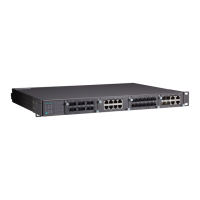
